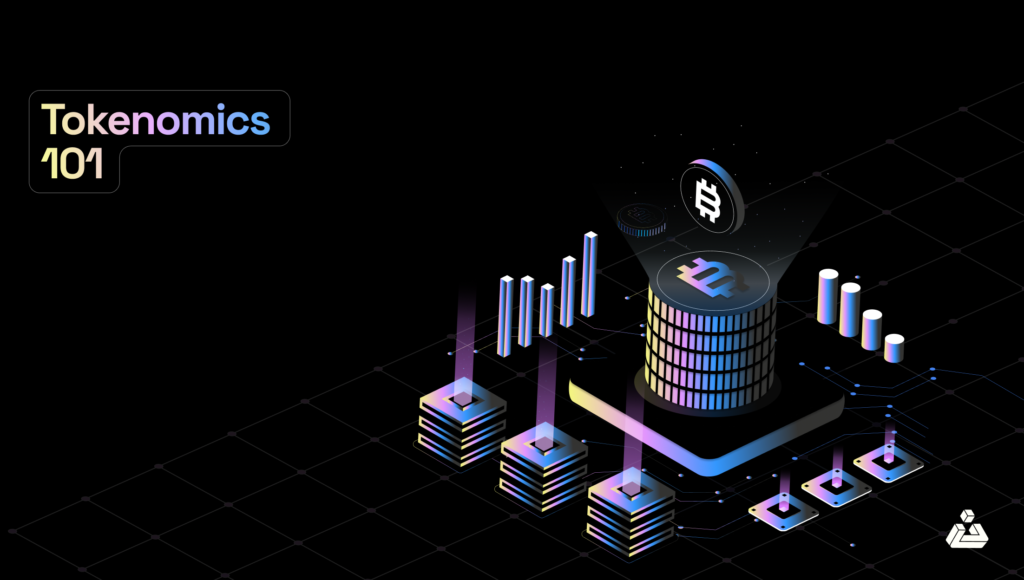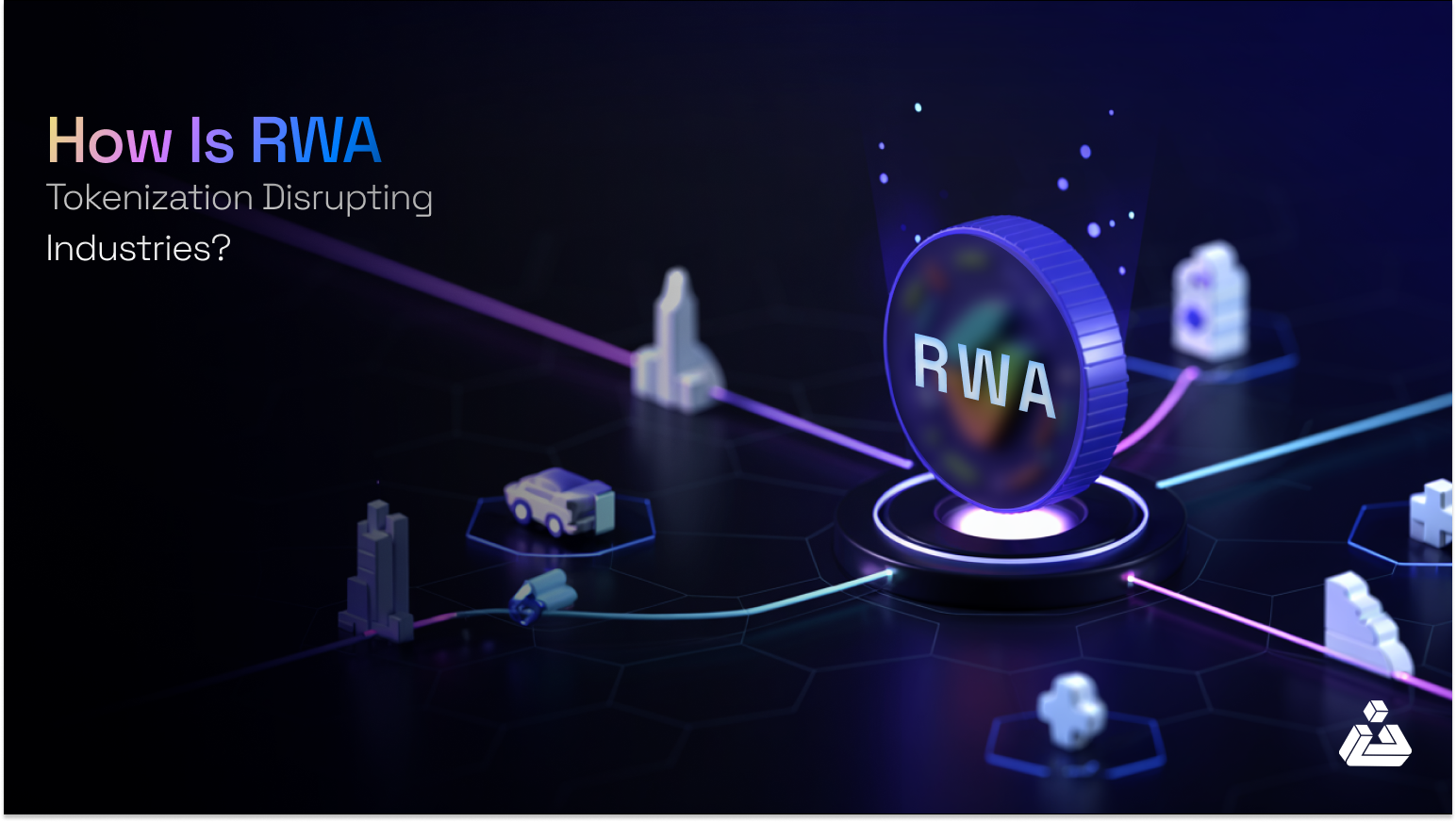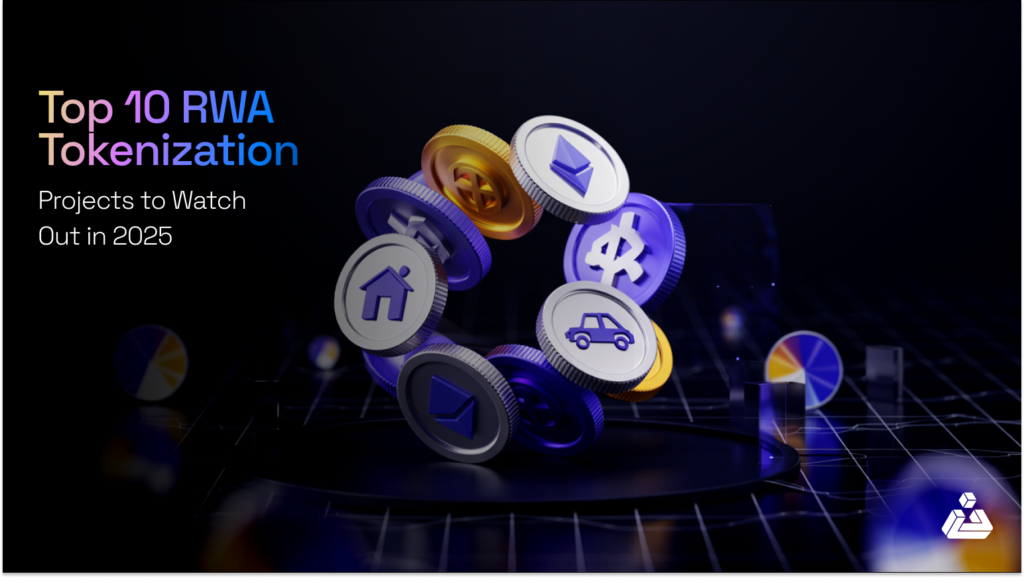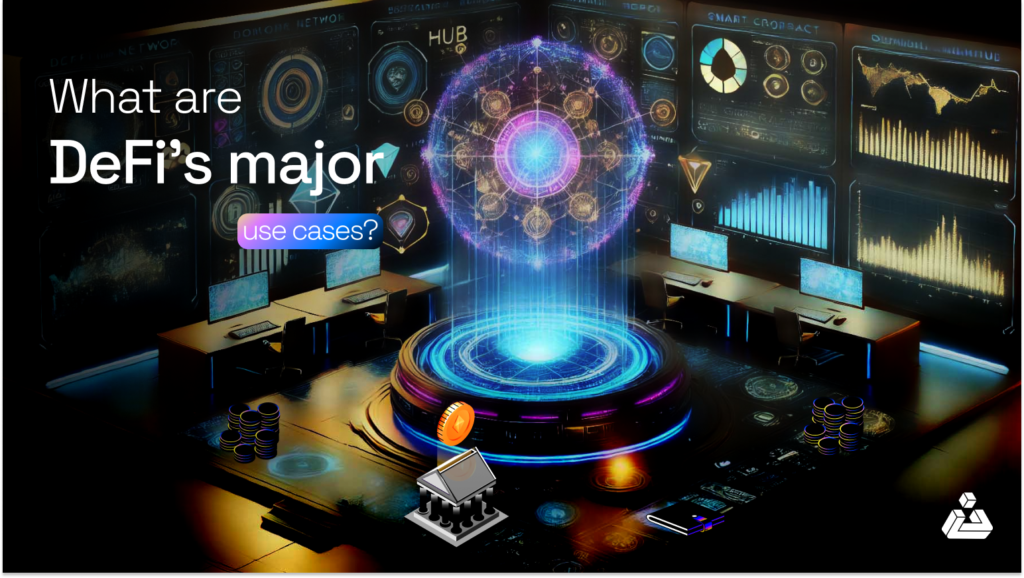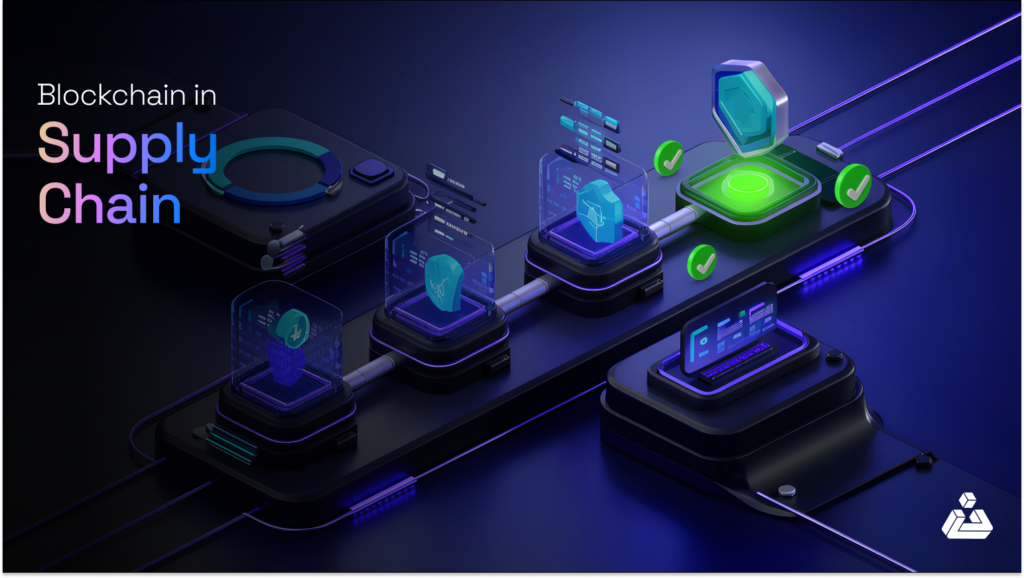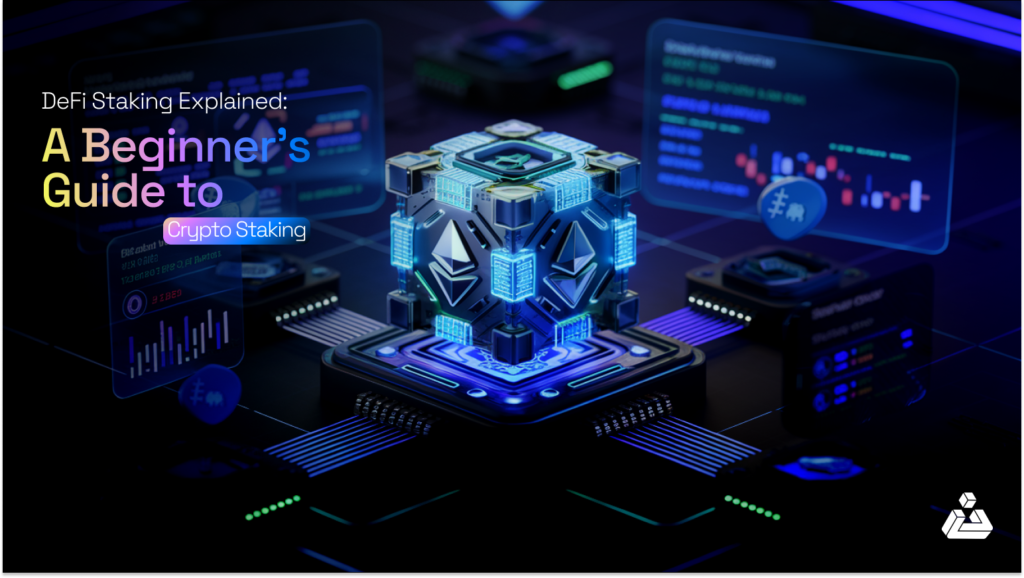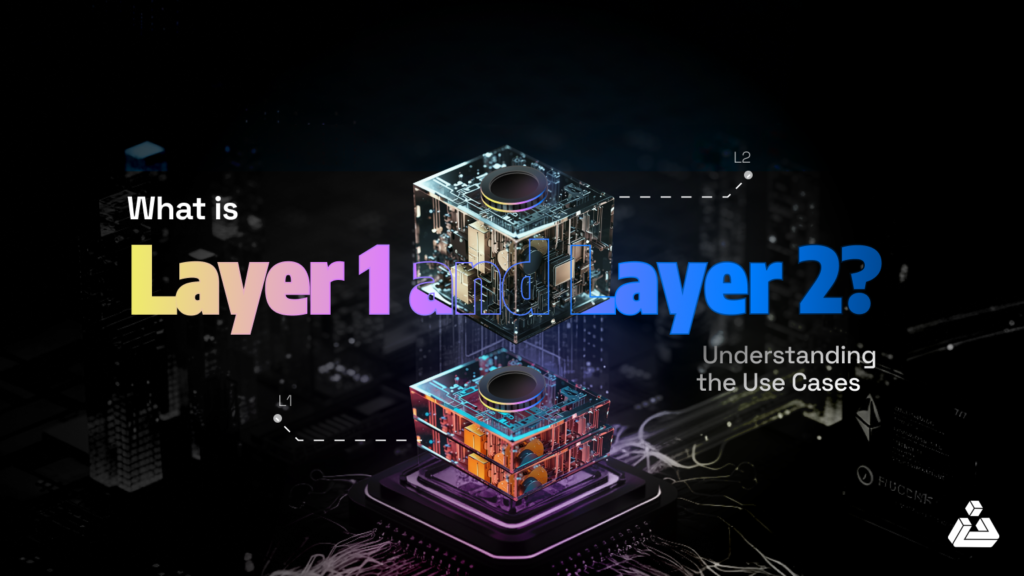Key Takeaways
- Tokenomics is the strategic blueprint governing token flow, value accumulation, and behavior incentives within a blockchain economy.
- Key components include token supply, utility, distribution, incentives, and token burns.
- Game theory ensures trust and cooperation within decentralized platforms by aligning economic incentives.
- Successful examples: Bitcoin and Ethereum. Risks of poor design: Terra and STEPN.
- Continuous monitoring and refinement are necessary for long-term success in the rapidly evolving decentralized landscape.
What is Tokenomics?
Tokenomics, a blend of “token” and “economics,” refers to the study and design of the economic systems within blockchain ecosystems that govern the creation, distribution, and management of tokens. It encompasses the principles and mechanisms that drive the value and utility of tokens within a decentralized network. Whether a project aims to raise funds, foster economic growth, or enhance network security, sound tokenomics is a fundamental component that underpins its success.
Defining Tokenomics
Tokenomics is formally defined as the blueprint that governs how tokens flow, accumulate value, and incentivize behavior within a blockchain powered digital economy. It is a carefully crafted strategy designed to balance utility and scarcity of resources while prioritizing the best interests of users.
Too complicated? Let’s try to understand in simple terms with an example.
Think of tokenomics as the architectural blueprint for a bustling city. Just as a city plan dictates the flow of traffic, the placement of resources, and the incentives for people to live and work there, tokenomics guides how tokens move within a digital economy, how they gain value, and how participants are motivated to engage.
In this city, utility is like the infrastructure—roads, bridges, and utilities—ensuring that everything functions smoothly. Scarcity is the zoning laws, controlling how much space can be used and keeping property valuable. The overall design is crafted with the citizens’ best interests in mind, just as tokenomics is structured to create a balanced, thriving ecosystem where users are rewarded for their participation and loyalty.
Now that we have explored the concept from an abstract perspective, let’s delve into tokenomics in its most practical form—its application within decentralized economies.
What are decentralized economies?
Decentralized economies are systems where economic activities occur without central authorities, relying on blockchain technology and smart contracts to facilitate transactions and governance.
In these economies, tokenomics is crucial in determining how value is created, distributed, and maintained. Tokens act as the primary medium of exchange, driving participation and aligning the interests of all stakeholders.
Key Components of Tokenomics
Just like all fiat currencies are different and operate based on the monetary policies of their respective central banks, most of the decentralized economies have their tokens each of which has its own monetary policy and specific mechanics based on how they are intended to be used within the network.
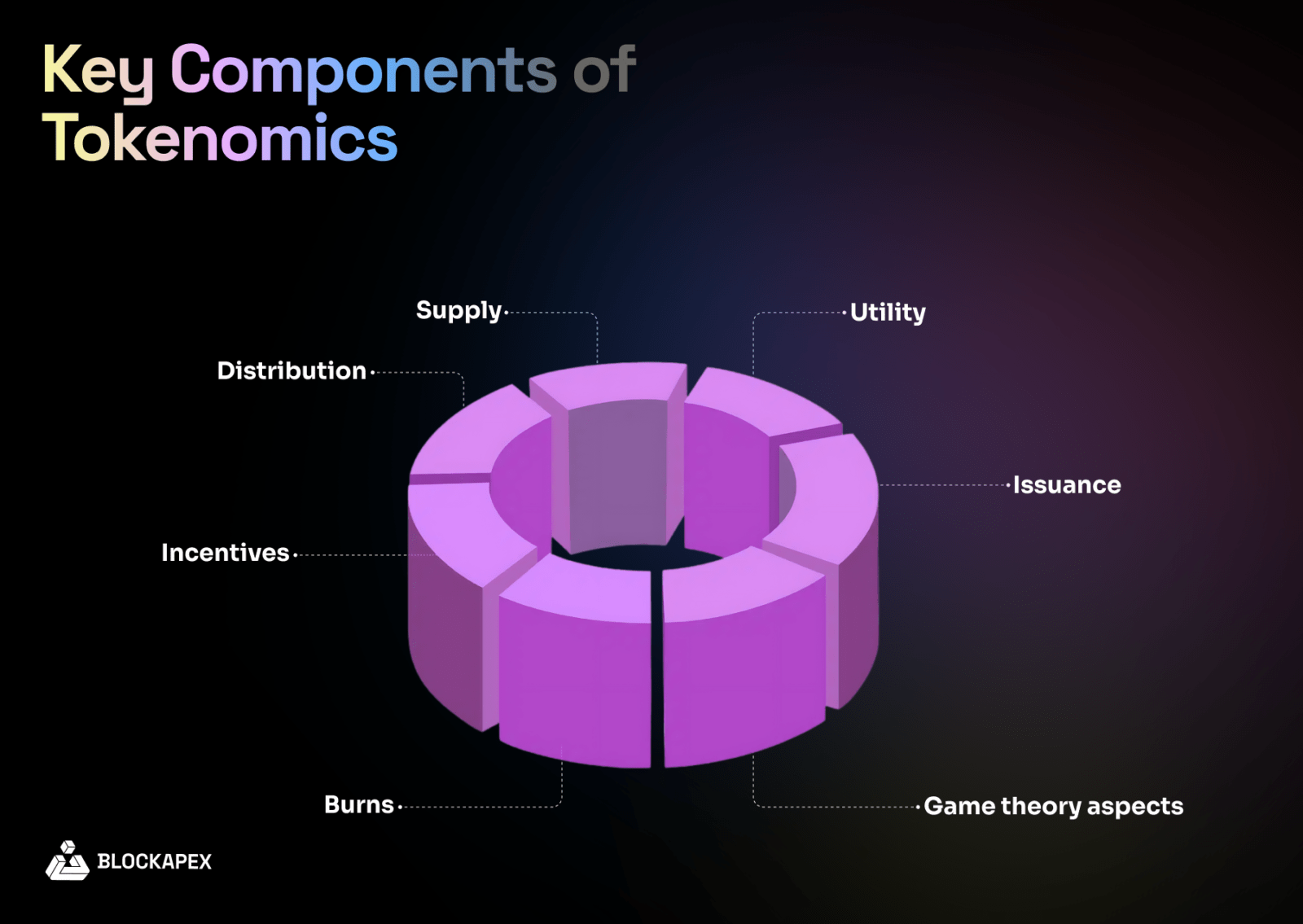
Below are some of the key components that developers consider when designing token economies:
Token Supply
Token supply is a key element of a project’s tokenomics, dictating the total number of tokens that can be issued. This supply can be fixed, like Bitcoin’s 21 million cap, designed to create scarcity and a long-term store of value. Alternatively, it can be inflationary, with no cap on total supply, as with Ethereum, where new ETH is issued to reward validators. The choice between a fixed or inflationary supply directly impacts the token’s value, network security, and overall economic dynamics within the project.
Token Utility
Token utility is another key component, representing the demand side of the equation. It defines the specific use cases and functions of a token within its economy, driving demand and influencing the token’s value. A token’s utility can range from serving as a medium of exchange, providing access to services, enabling governance participation, to securing the network.
For example, in the Ethereum ecosystem, the ETH token serves crucial utility functions: it is used to pay gas fees necessary for executing transactions on the network, and it is staked by validators to participate in the PoS consensus mechanism, thereby securing the network.
Token Distribution
Token distribution is a critical component of a project’s tokenomics, directly influencing the balance between supply and demand, and ultimately, the stability and value of the token. A well-designed distribution strategy ensures tokens are allocated fairly among investors, developers, and users, preventing over-concentration and promoting broader participation.
To maintain this balance, vesting schedules are often incorporated into distribution plans. Vesting facilitates the gradual release of tokens over time, particularly for private investors and team members, who typically experience longer cliff and vesting periods. This approach helps ensure that the number of tokens entering circulation is aligned with the growth in demand, thereby preventing any adverse effects on the token’s price.
Incentives
For projects, token incentives play an important role in bootstrapping user growth. They are designed to encourage specific actions that directly contribute to the project’s success, such as liquidity provision, staking, or yield farming. For example, Ethereum incentivizes validators to participate in network consensus by rewarding them with ETH tokens, thereby enhancing network security. Similarly, popular decentralized exchanges (DEXes) like Uniswap, Curve, and PancakeSwap have used native token incentives to bootstrap liquidity on their platforms, attracting users and fostering rapid growth. These incentive structures are integral to the early and sustained adoption of the project, ensuring that key economic activities are effectively rewarded and supported.
Token Burns
Token burns play a crucial role in the tokenomics of many cryptocurrency projects. This process involves permanently removing a portion of tokens from circulation, effectively reducing the total supply. Token burns are particularly important in inflationary environments, where the supply of tokens is continuously increasing. By burning tokens, projects can mitigate this inflationary pressure and help maintain or enhance the token’s value. For instance, under Ethereum’s EIP 1559, a portion of ETH is burned with every transaction, decreasing the circulating supply and supporting the token’s long-term value.
Game Theory Application in Tokenomics
In the decentralized landscape of Web3, where smart contracts encode the operational logic of protocols, establishing trust between the platform and its users is paramount, particularly in peer-to-peer environments where users simultaneously occupy both the demand and supply sides of transactions.
Game theory, a key concept in classical economics, assumes that people act rationally, always aiming to maximize their own interests. Token economy designers use this idea to create economic incentives that align everyone’s interests. By encoding these incentives into smart contracts, they ensure that the platform operates fairly and transparently, encouraging cooperation and minimizing risks.
In simple terms, game theory helps decentralized platforms create a system where users can trust that everyone is playing by the same rules, leading to a more reliable and secure environment for all.
Examples of Sustainable Tokenomics
Let’s delve into some of the most well-established tokenomics models that have demonstrated long-term success in the industry. For simplicity, we’ll focus on Bitcoin and Ethereum, the leading cryptocurrencies by market capitalization.
Bitcoin’s Tokenomics
As previously discussed in this article, Bitcoin has a fixed total supply of 21 million tokens, ensuring that no additional Bitcoin can be created beyond this limit. This finite supply underpins Bitcoin’s dual objectives: to serve as a decentralized peer-to-peer payment system and to function as a digital store of value.
New Bitcoin is issued exclusively as mining rewards to miners who successfully solve complex computational problems to add blocks to the blockchain. The mining reward undergoes a process known as bitcoin halving, which occurs approximately every four years, reducing the reward by half. Initially, the reward was set at 50 BTC per block when Bitcoin was first introduced. As of this writing, the reward stands at 3.125 BTC per valid block mined.
This built-in scarcity is designed to mimic the properties of precious metals like gold, where the limited supply is expected to increase value as demand rises. This scarcity creates a strong incentive for participants to acquire and hold Bitcoin, particularly as the supply approaches its maximum limit.
Game theoretic perspective on Bitcoin’s Tokenomics
Bitcoin’s decentralized nature is a game theoretic solution to the problem of trust in a trustless environment. With no central authority, Bitcoin relies on its global network of miners to maintain security and integrity. Each miner, acting independently, contributes to the collective security of the network by following the protocol rules. Game theory ensures that it is in each miner’s best interest to act honestly because any deviation (e.g., attempting a double-spend attack) would be costly and unlikely to succeed, given the collective power of the network.
To explore the intricacies of Bitcoin’s security model and understand how its economic design ensures the network’s sustainability, you can read more in this detailed deep dive on Bitcoin’s security model.
Ethereum’s Tokenomics
Ethereum’s tokenomics is thoughtfully designed to ensure both flexibility and sustainability in its role as the leading smart contract platform. Unlike Bitcoin’s fixed supply, Ethereum uses a dynamic issuance model through its Proof of Stake (PoS) mechanism. This transition from Proof of Work (PoW) to PoS, especially with the Ethereum 2.0 upgrade, reduces the issuance rate of ETH, introducing deflationary pressures.
Validators in Ethereum’s PoS system secure the network by staking ETH, and in return, they receive rewards. However, if they act maliciously or attempt to cheat the system, their staked ETH can be “slashed,” effectively penalizing them. This game-theoretic approach aligns the incentives of validators with the security and integrity of the network. Validators are economically motivated to behave honestly, as the potential costs of malicious activity outweigh the benefits.
Additionally, the use of ETH as “gas” for executing transactions and smart contracts ties the currency’s value directly to network activity. As demand for decentralized applications (dApps) and transactions on Ethereum increases, so does the demand for ETH, further enhancing its value and utility.
Read more about ethereum’s economic layer in this analysis to get a deeper understanding on its tokenomics.
Why is Tokenomics Important?
By now, it should be clear that sound tokenomics is a cornerstone of any successful decentralized economy. Effective tokenomics ensures the sustainability, security, and growth of a blockchain project by aligning the incentives of all participants. It’s not just about how tokens are distributed or used (as discussed in the key components section); it’s about crafting a balanced and resilient ecosystem where every element is aligned with the protocol’s core value proposition.
To further illustrate the importance of tokenomics, let’s look at a couple of examples of poor economic models in the space.
Terra Stablecoins
Terra’s ecosystem, particularly its stablecoin UST, relied heavily on an algorithmic mechanism to maintain its peg to the US dollar. This mechanism relied on arbitrageurs minting and burning LUNA tokens to stabilize UST’s value. However, the model was vulnerable to extreme market conditions. When UST lost its peg, the system attempted to print excessive LUNA to restore stability, leading to hyperinflation of LUNA, a collapse in confidence, and ultimately, a dramatic loss of value for both LUNA and UST.
Read “The Terra Luna Crash”
The crash was fundamentally rooted in a vulnerability within the virtual liquidity pool module of the Terra ecosystem. Unlike a typical code flaw, this was an economic vulnerability. The system was unable to adjust the recovery period of the virtual pool in real-time to prevent the excessive minting of LUNA, as the necessary parameter updates required a governance process. This delay in response contributed to the hyperinflation of LUNA and the subsequent collapse in value of both LUNA and UST. For a deeper understanding, you can explore our detailed post-mortem analysis, which delves into the economic factors that led to the downfall of Terra Luna.
STEPN
Similarly, STEPN, a move-to-earn app that rewards users with cryptocurrency for physical activity, faced significant challenges. The project initially garnered massive interest, but its dual-token system—GST (utility token) and GMT (governance token)—created an unsustainable economic model. As more users joined, the supply of GST inflated rapidly, leading to a sharp decline in its value. Additionally, rewards outpaced demand, resulting in diminished incentives for users. This imbalance between token issuance and utility highlights the pitfalls of poorly designed incentive structures in tokenomics.
Read more about the “Dark side of Play-to-Earn”
Closing Thoughts
Tokenomics is far more than a distribution strategy or a vesting schedule; it is the lifeblood of a decentralized economy. A well-crafted tokenomics model serves as the foundation upon which projects can build sustainable, thriving ecosystems that align the interests of all participants. It is a discipline that requires ongoing vigilance, and a deep understanding of both the project’s goals and the dynamics of decentralized finance. Just as central bankers and economists craft policies to steer national economies, token economists must continuously refine and improve the economic policies governing decentralized platforms to ensure their long-term success.
A robust tokenomics design lays the groundwork for innovation, growth, and stability in the Web3 world, enabling projects to weather market volatility and attract long-term participants. However, as we’ve seen with examples like Terra and STEPN, even the most promising projects can falter if their tokenomics are not carefully considered and maintained. The importance of tokenomics cannot be overstated—it is a critical factor that determines whether a project will merely survive or truly thrive in the competitive and rapidly evolving landscape of decentralized economies.
As the decentralized space continues to mature, we believe that sound tokenomics will become a top priority for project teams. We are committed to exploring this critical area further in our future posts, providing insights and guidance on the science of tokenomics. If you have any questions or need assistance with your project’s tokenomics, please don’t hesitate to reach out to us at BlockApex.



